Don't wanna be here? Send us removal request.
Text
How Do We Learn About a Planet’s Atmosphere?
The first confirmation of a planet orbiting a star outside our solar system happened in 1995. We now know that these worlds – also known as exoplanets – are abundant. So far, we’ve confirmed more than 4000. Even though these planets are far, far away, we can still study them using ground-based and space-based telescopes.
Our upcoming James Webb Space Telescope will study the atmospheres of the worlds in our solar system and those of exoplanets far beyond. Could any of these places support life? What Webb finds out about the chemical elements in these exoplanet atmospheres might help us learn the answer.
How do we know what’s in the atmosphere of an exoplanet?
Most known exoplanets have been discovered because they partially block the light of their suns. This celestial photo-bombing is called a transit.
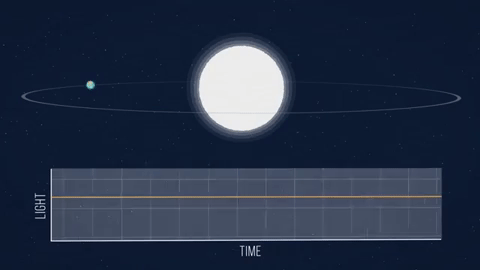
During a transit, some of the star’s light travels through the planet’s atmosphere and gets absorbed.
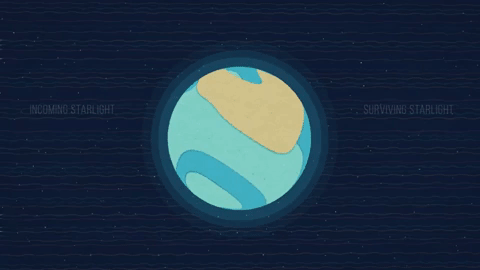
The light that survives carries information about the planet across light-years of space, where it reaches our telescopes.
(However, the planet is VERY small relative to the star, and VERY far away, so it is still very difficult to detect, which is why we need a BIG telescope to be sure to capture this tiny bit of light.)
So how do we use a telescope to read light?

Stars emit light at many wavelengths. Like a prism making a rainbow, we can separate light into its separate wavelengths. This is called a spectrum. Learn more about how telescopes break down light here.
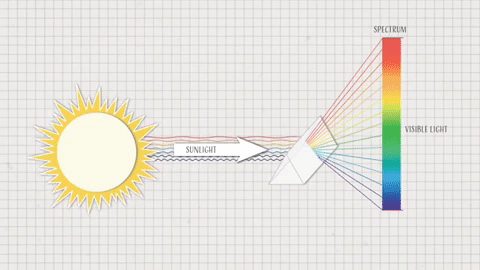
Visible light appears to our eyes as the colors of the rainbow, but beyond visible light there are many wavelengths we cannot see.
Now back to the transiting planet…
As light is traveling through the planet’s atmosphere, some wavelengths get absorbed.

Which wavelengths get absorbed depends on which molecules are in the planet’s atmosphere. For example, carbon monoxide molecules will capture different wavelengths than water vapor molecules.

So, when we look at that planet in front of the star, some of the wavelengths of the starlight will be missing, depending on which molecules are in the atmosphere of the planet.
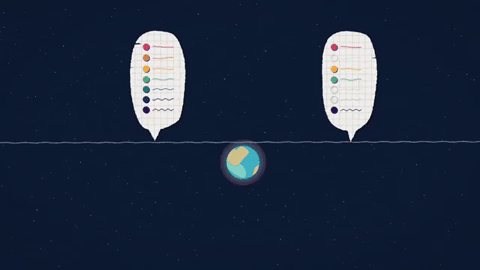
Learning about the atmospheres of other worlds is how we identify those that could potentially support life…
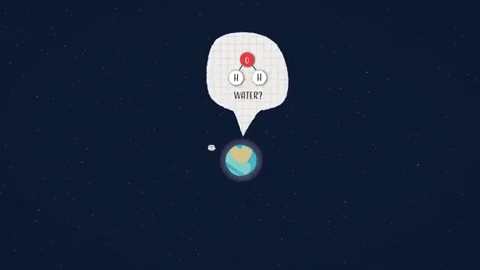
…bringing us another step closer to answering one of humanity’s oldest questions: Are we alone?

Watch the full video where this method of hunting for distant planets is explained:
youtube
To learn more about NASA’s James Webb Space Telescope, visit the website, or follow the mission on Facebook, Twitter and Instagram.
Text and graphics credit Space Telescope Science Institute
Make sure to follow us on Tumblr for your regular dose of space: http://nasa.tumblr.com.
2K notes
·
View notes
Video
youtube
How to fold a corner heart bookmark origami? Origami Valentine Heart Bookmark Easy instructions Heart Corner Bookmark by Fun and Play Crafts
171 notes
·
View notes
Video
tumblr
These look like the best cheese sticks ever.
22K notes
·
View notes
Video
youtube
How to Make a Professional Camera Slider (100% DIY!)
1 note
·
View note
Photo






faBrickation
System for faster prototyping turns 3D designs into LEGO models, allowing to focus on intricate details for 3D printing - video embedded below:
faBrickation is a new approach to rapid prototyping of functional objects, such as the body of a head-mounted display. The key idea is to save 3D printing time by automatically substituting sub-volumes with standard building blocks — in our case Lego bricks. When making the body for a head-mounted display, for example, getting the optical path right is paramount. Users thus mark the lens mounts as “high-resolution” to indicate that these should later be 3D printed. faBrickator then 3D prints these parts. It also generates instructions that show users how to create everything else from Lego bricks.
If users iterate on the design later, faBrickator offers even greater benefit as it allows re-printing only the elements that changed. We validated our system at the example of three 3D models of functional objects. On average, our system fabricates objects 2.44 times faster than traditional 3D printing while requiring only 14 minutes of manual assembly.
More Here
469 notes
·
View notes
Video
youtube
Sukiyabashi Jiro - Best Sushi In The World
2 notes
·
View notes
Video
youtube
Eating Live Shrimps in Korea
0 notes
Video
youtube
Temaki Sushi (Japanese Hand Roll Sushi) 手巻き寿司の作
Ingredients for Temaki Sushi: 300ml Rice (10 1/2 oz) 300ml Water (10 1/2 oz) 1 tbsp Sake 5x5cm Kombu Kelp (2x2 inches) 2 tbsp Roasted White Sesame Seeds A Little Ginger 40ml Rice Vinegar (2 tbsp & 2 tsp) 1/2 tbsp Sugar 1 tsp Salt 2 Eggs 2 tsp Sugar A Bit of Salt 4 Srimps 100g Chu-Toro - Medium Fatty Tuna (3 1/2 oz) 100g Kampachi - Greater Amberjack (3 1/2 oz) 100g Fatty Salmon (3 1/2 oz) 1 Precooked Anago - Conger Eel 2 Scallops 1 Cuttlefish Looseleaf Lettuce Newly Harvested Onion Radish Sprouts 1/2 Cucumber 50g Takuan - Pickled Daikon Radish (2 oz) 50g Nagaimo - Japanese Mountain Yam (2 oz) 10 Shiso Leaves - Beefsteak Leaves Toasted Nori - Toasted Laver Seaweed Gari - Sushi Ginger Mayonnaise Wasabi - Grated Japanese Horseradish Soy Sauce
(via cookingwithdog on the Sushi list)
2 notes
·
View notes
Video
youtube
Rolling Maki Sushi
4 notes
·
View notes
Video
youtube
Nigiri Sushi
Ingredients: 1 (8-ounce) piece sashimi-grade ahi tuna, salmon, or yellowtail 1 1/2 teaspoons prepared wasabi, plus more for serving 2 1/4 cups sushi rice pickled ginger, for serving soy sauce, for serving
(via veriawellness)
1 note
·
View note
Video
youtube
ダシ巻き玉子焼 Japanese Omelette
材料 Ingredients 玉子 eggs 8 砂糖 sugar 30g 塩 salt 3g みりん Mirin 1tsp (1パイ) 酒 Sake 1 tsp (1パイ) カツオダシ Bonito Stock 180ml
(via KaitenSushiTV)
2 notes
·
View notes
Text
How To Make Sushi Rice
600g short grained Japanese rice 110ml rice vinegar 50g sugar half teaspoon salt 1 tbsp (15ml) dashi (bonito stock)
see on youtube (via videojug)
0 notes
Video
vimeo
cool way to fold a T-Shirt
7 notes
·
View notes
Video
How to Make a Friendship Bracelet (by somethingchanged, segoodwi)
youtube
7 notes
·
View notes



